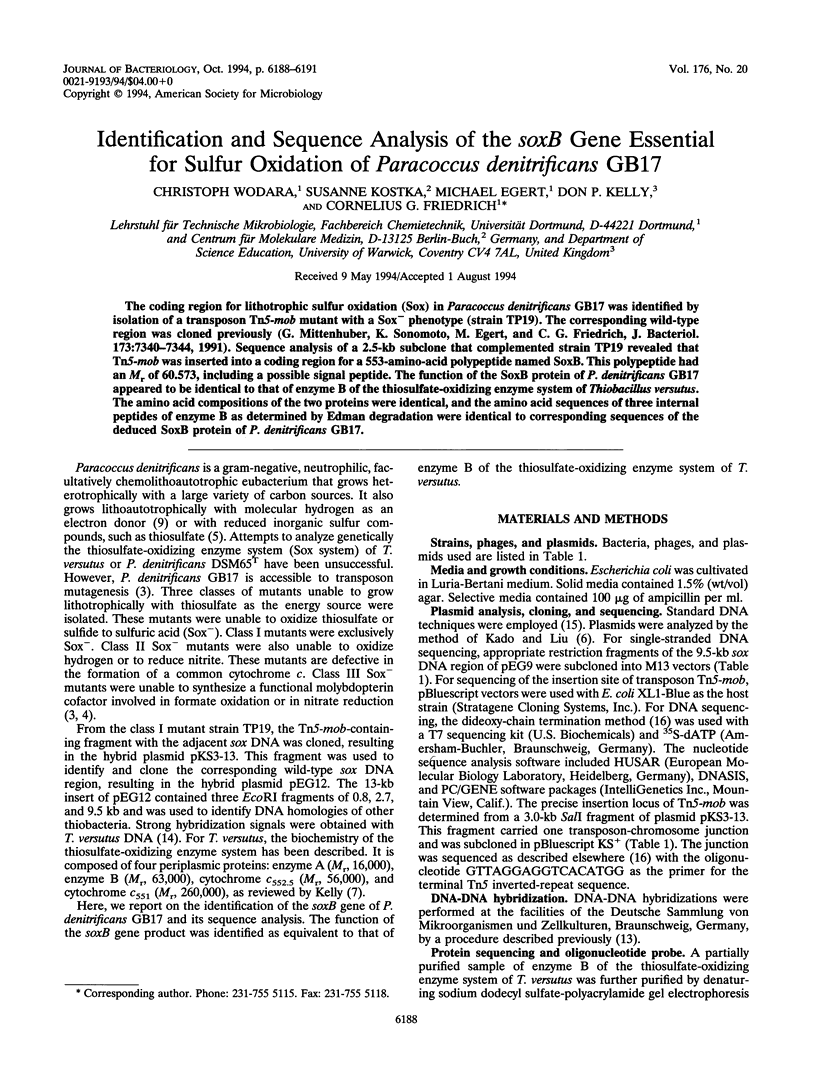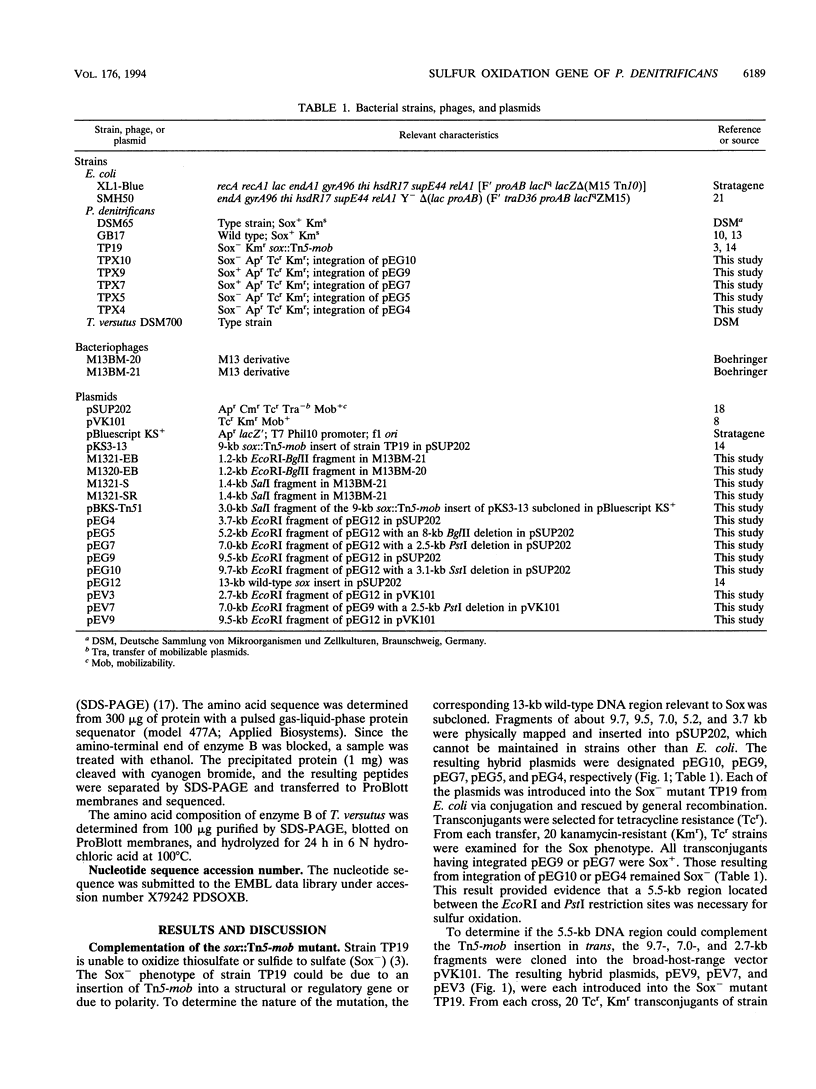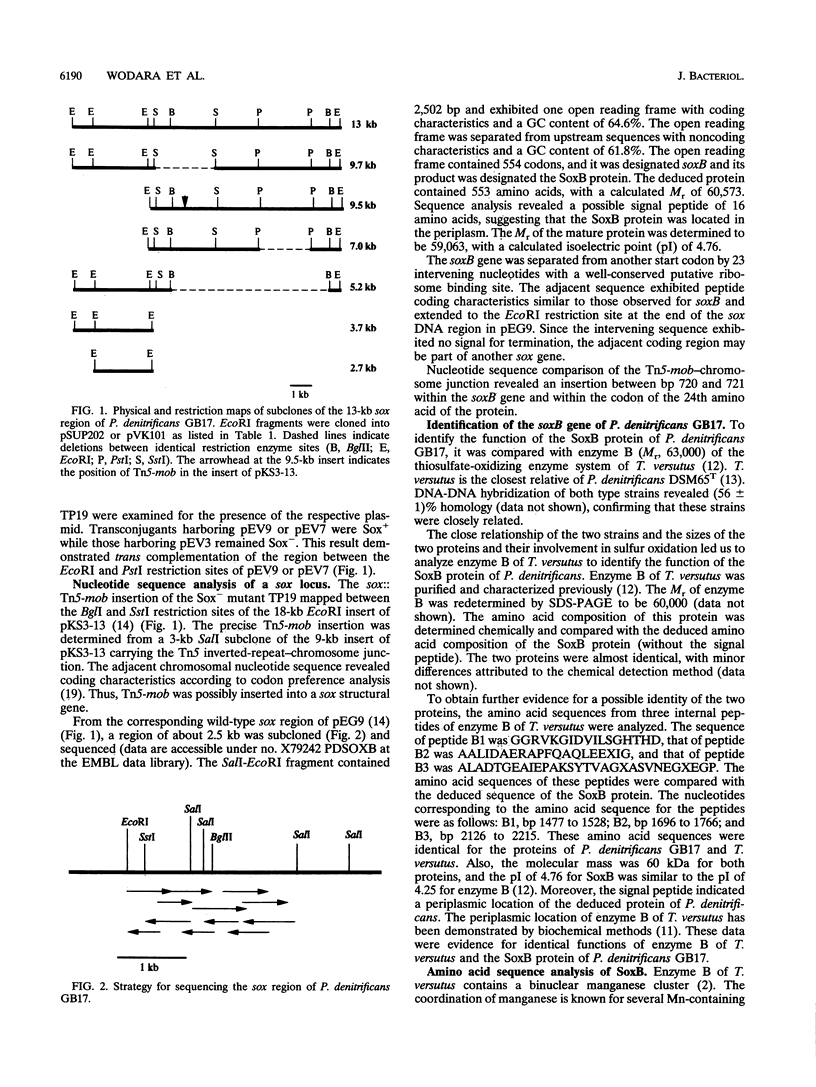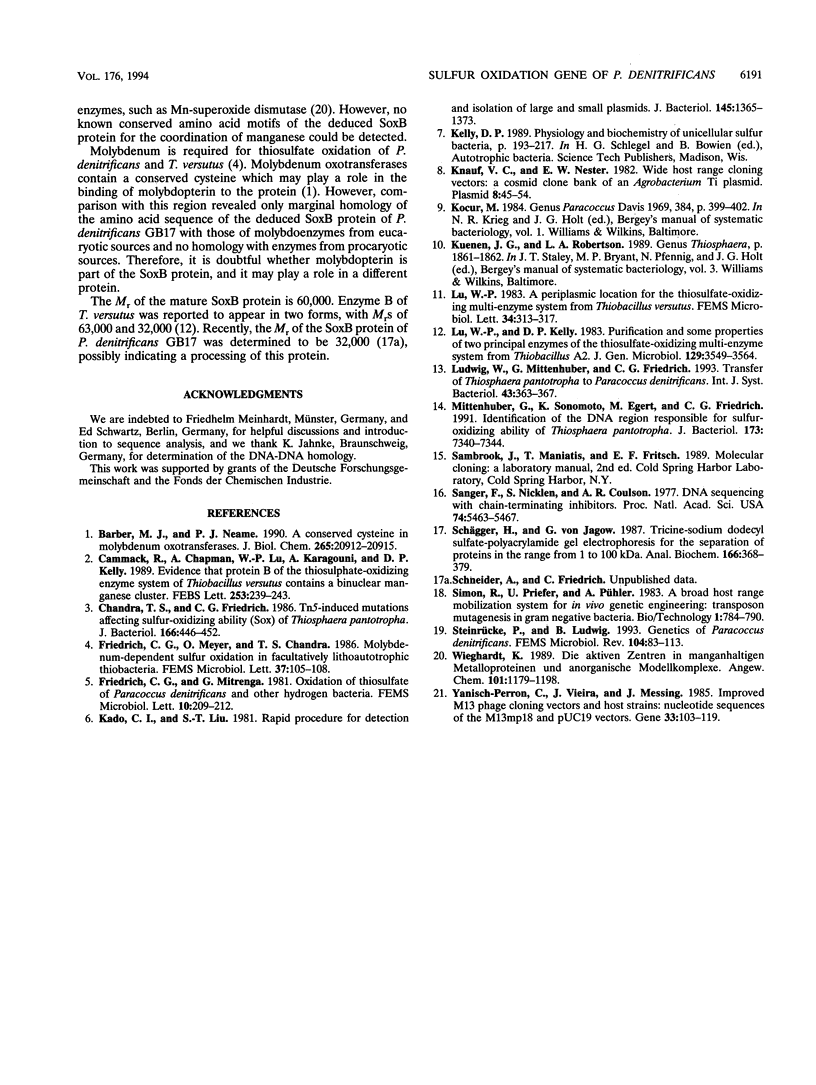Abstract
The coding region for lithotrophic sulfur oxidation (Sox) in Paracoccus denitrificans GB17 was identified by isolation of a transposon Tn5-mob mutant with a Sox- phenotype (strain TP19). The corresponding wild-type region was cloned previously (G. Mittenhuber, K. Sonomoto, M. Egert, and C. G. Friedrich, J. Bacteriol. 173:7340-7344, 1991). Sequence analysis of a 2.5-kb subclone that complemented strain TP19 revealed that Tn5-mob was inserted into a coding region for a 553-amino-acid polypeptide named SoxB. This polypeptide had an M(r) of 60.573, including a possible signal peptide. The function of the SoxB protein of P. denitrificans GB17 appeared to be identical to that of enzyme B of the thiosulfate-oxidizing enzyme system of Thiobacillus versutus. The amino acid compositions of the two proteins were identical, and the amino acid sequences of three internal peptides of enzyme B as determined by Edman degradation were identical to corresponding sequences of the deduced SoxB protein of P. denitrificans GB17.
Full text
PDF



Selected References
These references are in PubMed. This may not be the complete list of references from this article.
- Barber M. J., Neame P. J. A conserved cysteine in molybdenum oxotransferases. J Biol Chem. 1990 Dec 5;265(34):20912–20915. [PubMed] [Google Scholar]
- Chandra T. S., Friedrich C. G. Tn5-induced mutations affecting sulfur-oxidizing ability (Sox) of Thiosphaera pantotropha. J Bacteriol. 1986 May;166(2):446–452. doi: 10.1128/jb.166.2.446-452.1986. [DOI] [PMC free article] [PubMed] [Google Scholar]
- Kado C. I., Liu S. T. Rapid procedure for detection and isolation of large and small plasmids. J Bacteriol. 1981 Mar;145(3):1365–1373. doi: 10.1128/jb.145.3.1365-1373.1981. [DOI] [PMC free article] [PubMed] [Google Scholar]
- Knauf V. C., Nester E. W. Wide host range cloning vectors: a cosmid clone bank of an Agrobacterium Ti plasmid. Plasmid. 1982 Jul;8(1):45–54. doi: 10.1016/0147-619x(82)90040-3. [DOI] [PubMed] [Google Scholar]
- Ludwig W., Mittenhuber G., Friedrich C. G. Transfer of Thiosphaera pantotropha to Paracoccus denitrificans. Int J Syst Bacteriol. 1993 Apr;43(2):363–367. doi: 10.1099/00207713-43-2-363. [DOI] [PubMed] [Google Scholar]
- Mittenhuber G., Sonomoto K., Egert M., Friedrich C. G. Identification of the DNA region responsible for sulfur-oxidizing ability of Thiosphaera pantotropha. J Bacteriol. 1991 Nov;173(22):7340–7344. doi: 10.1128/jb.173.22.7340-7344.1991. [DOI] [PMC free article] [PubMed] [Google Scholar]
- Sanger F., Nicklen S., Coulson A. R. DNA sequencing with chain-terminating inhibitors. Proc Natl Acad Sci U S A. 1977 Dec;74(12):5463–5467. doi: 10.1073/pnas.74.12.5463. [DOI] [PMC free article] [PubMed] [Google Scholar]
- Schägger H., von Jagow G. Tricine-sodium dodecyl sulfate-polyacrylamide gel electrophoresis for the separation of proteins in the range from 1 to 100 kDa. Anal Biochem. 1987 Nov 1;166(2):368–379. doi: 10.1016/0003-2697(87)90587-2. [DOI] [PubMed] [Google Scholar]
- Steinrücke P., Ludwig B. Genetics of Paracoccus denitrificans. FEMS Microbiol Rev. 1993 Jan;10(1-2):83–117. doi: 10.1016/0378-1097(93)90505-v. [DOI] [PubMed] [Google Scholar]
- Yanisch-Perron C., Vieira J., Messing J. Improved M13 phage cloning vectors and host strains: nucleotide sequences of the M13mp18 and pUC19 vectors. Gene. 1985;33(1):103–119. doi: 10.1016/0378-1119(85)90120-9. [DOI] [PubMed] [Google Scholar]


